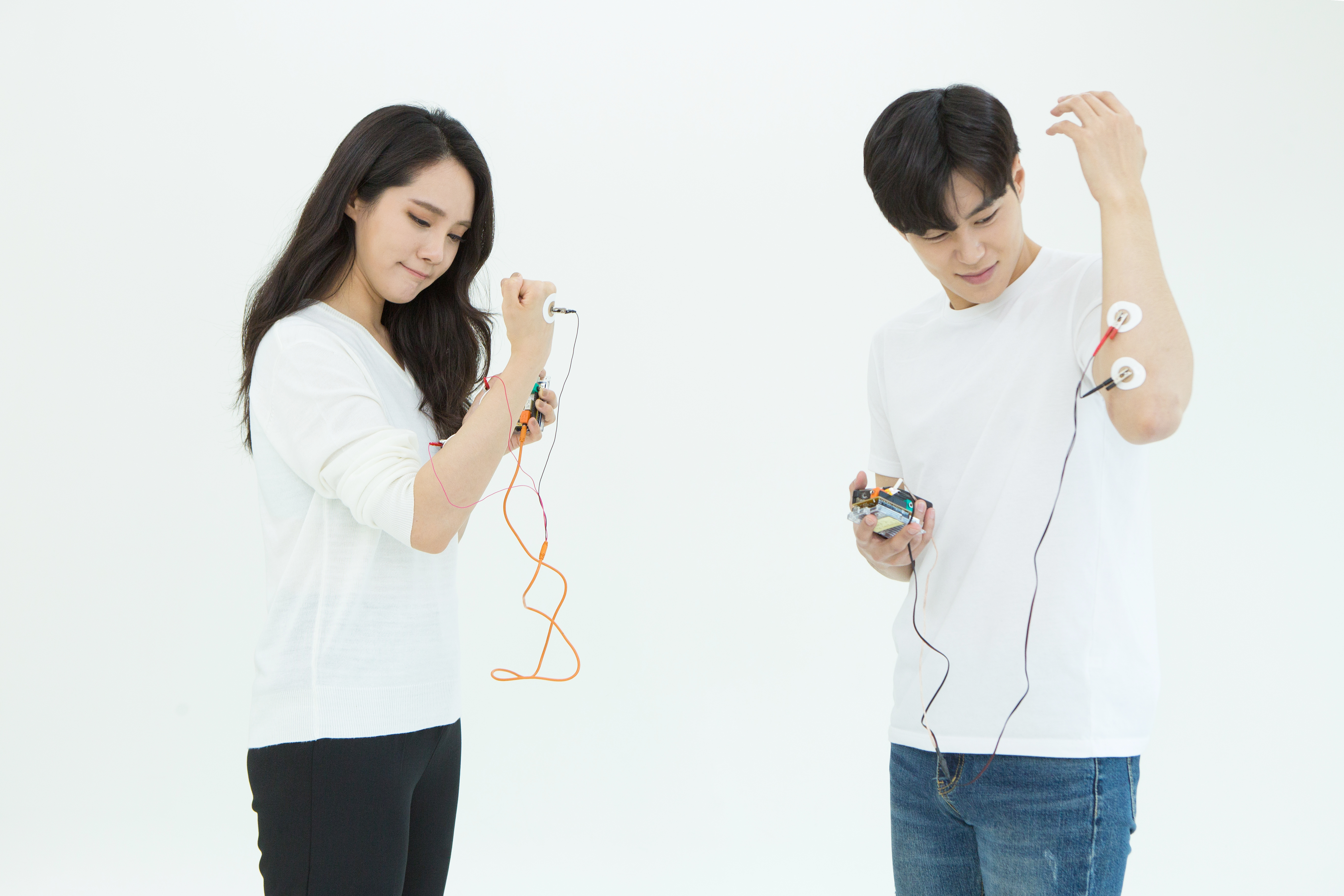The Wireless Human-Human Interface
By Timothy Marzullo
Use the electrical power of your arm muscles to wirelessly control your friend's nervous system over the internet!
Type: Education
Website: https://youtu.be/61_Ktm2bBMA




What inspired you or what is the idea that got you started?
We have a previous invention whereby the muscle electrical activity of one person can control the arm nerve activity of another person in a fun science "game," popular with biology and physics educators. During the COVID pandemic, a high school teacher asked us (via Zoom, of course) if we could make a wireless version that works over the internet. We headed to our workshop and started tooling around. With a few bio-amplifiers, some wireless-enabled microcontrollers, and our own custom MQTT server along the way, we built a working prototype and began demonstrating it in our high school outreach events, connecting students in South Korea with students in Chile, halfway around the world, with only a 0.5-1 second delay between arm muscle contraction of the "controller" in Korea and stimulation of the nerves of the "controlled" in either Chile or Germany.
What is your project about and how does it work?
We use our custom open-source bioamplifier circuits mated to Arduino UNO - WiFi Rev2 boards and an over-the-shelf TENS (Transcutaneous electrical nerve stimulator) with an MQTT server running on a Raspberry Pi Board. We amplify the electromyographic signals from one human's forearm muscles and connect it via WiFi to our server in our USA office. We then transmit the biophysiology signal to another WiFi-enabled circuit, that can be anywhere in the world, that triggers an attached TENS device connected to the ulnar nerve of another human. When you move your arm, the arm of another person, anywhere else on the Earth, thus moves. Given the global nature of the device (bio-signals traveling internationally), students and teachers highly enjoy the experience of getting to know people in other countries and cultures in shared instantaneous experiences.
What did you learn by doing this project?
We learned how to integrate biological signaling with wireless technologies and can now link international classrooms not just with screens but with electrophysiology. Now we can transmit muscle and nerve signals thousands of miles using IoT with only 1-second delays, and, moreover, we are now learning about programming cell phone network prototype boards, whereby the use of WiFi networks is no longer necessary. In the future, we will be able to use local telecom services to transmit biological data.
We also learned how to build IoT servers with MQTT protocols and power management with power-hungry WiFi chips. Our original prototype used the Adafruit servers that would not allow more than one pair of devices to be connected at once, so we worked with a talented Chilean developer to build our own custom MQTT server.
What impact does your project have on others as well as yourself?
The world is small and large at the same time. Social media connects people but mostly through largely passive audio-visual devices. By connecting nerves and muscles of people all over the world, we can make people excited about how their brains and muscles work and encourage the development of novel bio-interfaces and artistic projects. Biology, physiology, engineering, and internet technologies are very effective for teaching the scientific and engineering process in the classroom, and initial demos in high schools have been met with favorable reception. Students get excited to be randomly "hooked-up" in a very visceral way to someone around the world that speaks a different language.
We also learned that technologies that allow people to have fun together while doing science experiments is the best way to train future scientists, engineers, doctors, and artists.





